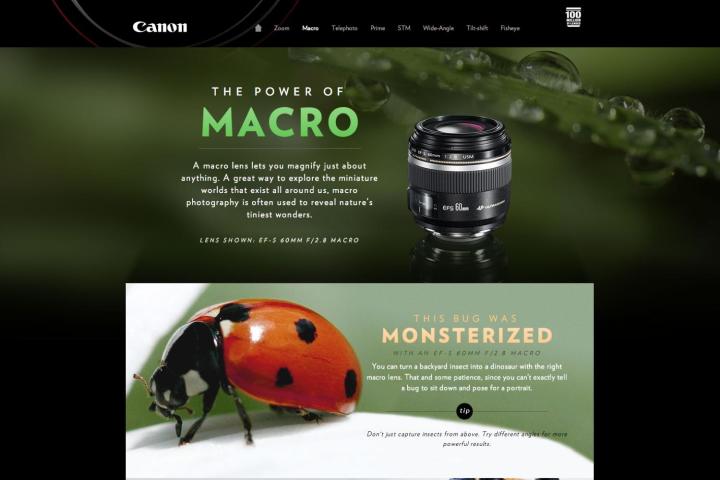
While kit lenses aim to be one-size-fits-all, there are scenarios that call for different glass that deliver stunning quality. That, of course, is the beauty of having the ability to swap out lenses, and having the appropriate glass could help you achieve some great images. For newbies, however, picking the right lens can be daunting, especially if they don’t understand all the nomenclature. Canon, which makes a lot of lenses, helps these new users decipher all those long-winded lens names by introducing the features of a particular lens, what it’s good for, and quick tips on how to use it. There are videos too, to help you visualize all the details (like the one about tilt-shift, below).
Divided into Zoom, Macro, Telephoto, Prime, STM, Wide-Angle, Tilt-shift, and Fisheye – all the lens categories that Canon offers – Canon describes each in the simplest terms, and recommends select models to help you attain a certain type of image. For example, to get up-close to a ladybug, Canon suggests using an EF-S 60mm f/2.8 macro lens. While Canon recommends lenses from its lineup, the info could be adapted for any brand.
Of course, there are a lot more to lenses and photography than what’s mentioned on the site, as it’s all very basic (check out our lens-related articles for more, here and here). The website is designed to be an intro to lenses, but it’s a quick and useful resource to help new users feel less intimidated about their equipment, and hopefully get them to explore more about their lens options.
(Via The Phoblographer)


